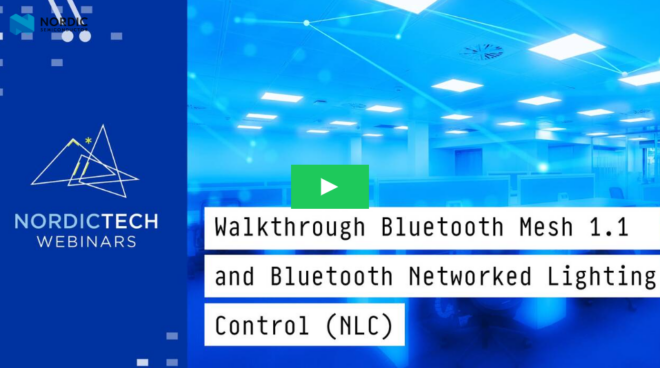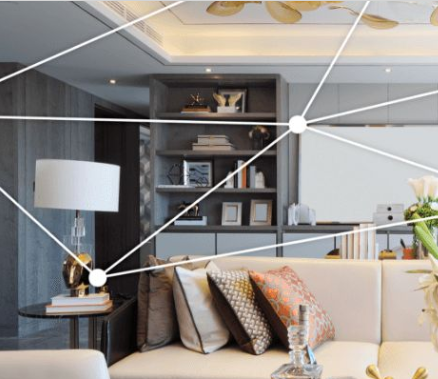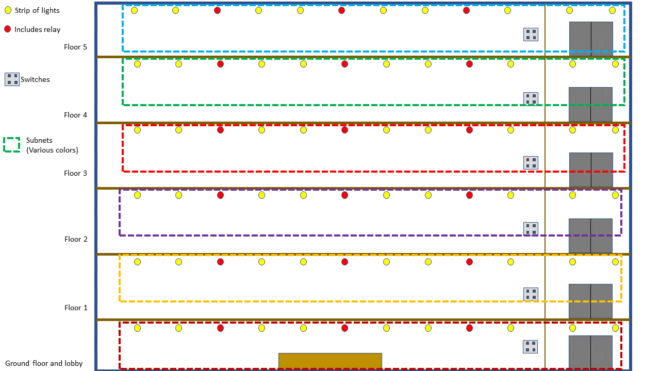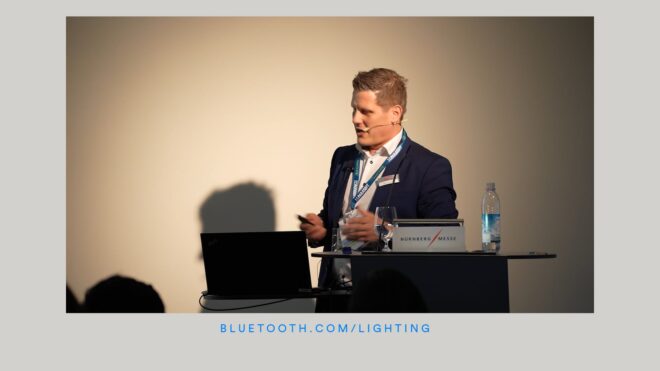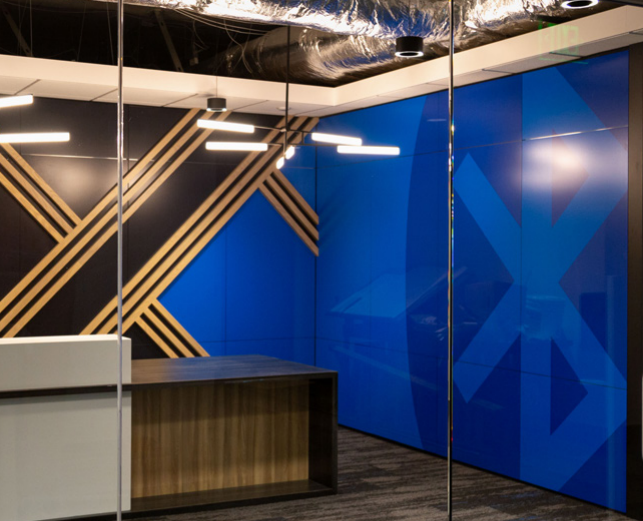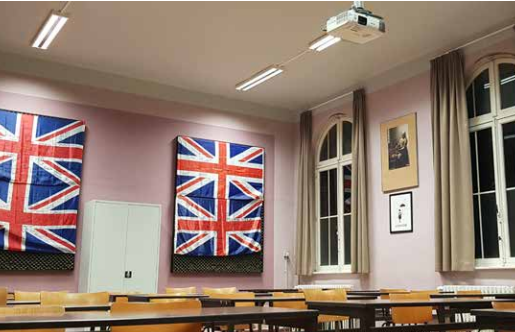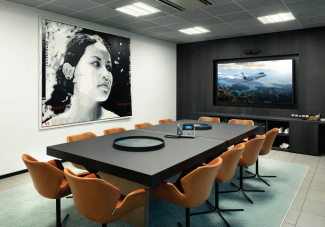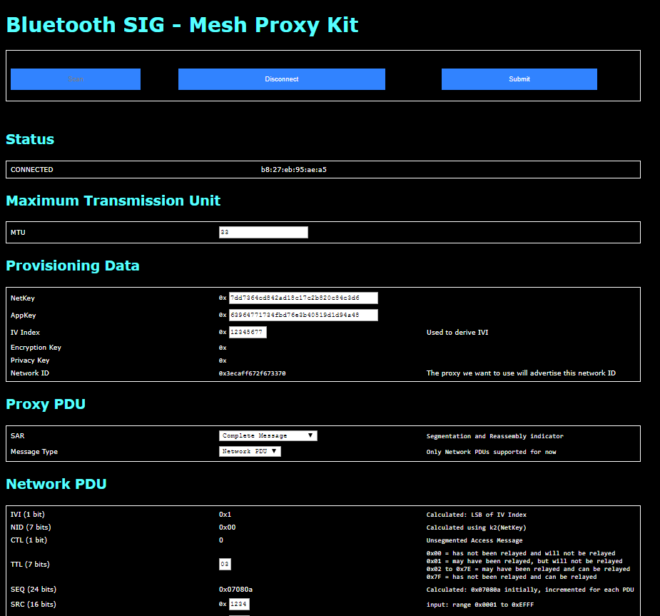The introduction of the power-saving Bluetooth® Low Energy (LE) standard and the expansion of the protocol to include the ability to form mesh networks makes Bluetooth technology the first choice for supporting commercial lighting control networks with maximum interoperability.
Luminaires equipped with sensors can connect to any other devices and sensors via Bluetooth® Mesh, forming a wireless network in which all nodes can communicate reliably with each other. This makes Bluetooth Mesh the only wireless standard capable of supporting a completely decentralized infrastructure and eliminating single points of failure. This is not just about energy-efficient lighting management. Bluetooth Mesh supports countless other functionalities, such as optimal building utilization, improved occupant experience, and more efficient building operations.
As a technology leader for lighting sensor technology, STEINEL Solutions is building with Bluetooth® Mesh. In an interview with Manuel Siegrist, sales and product manager SENSOTEC at STEINEL Solutions AG, we discovered more about innovative possibilities in building control, viable lighting networking, and future IoT functionalities.
Q&A with Manuel Siegrist, Sales & Product Manager SENSOTEC at STEINEL Solutions AG
Could you briefly describe your current solutions that use Bluetooth® Mesh?
STEINEL Solutions offers intelligent sensor technology for professional building lighting, and we develop and manufacture customized solutions for smart building automation through lighting installations. With Bluetooth® Mesh, we have, for the first time, established an overarching standard which is easy to install and very simple to use. All our lighting sensors in the SENSOTEC series are therefore equipped with Bluetooth mesh, allowing us to achieve a completely new level of interoperability with numerous functionalities and great savings potential as well as virtually unlimited possibilities for further IoT applications. Bluetooth mesh enables reliable and wireless networking for modern building control. Best of all, everyone already has access to this technology via their smartphone or tablet.
With Bluetooth® Mesh, we have…established an overarching standard which is easy to install and very simple to use.
Why did you decide to use Bluetooth® Mesh?
Controlling light and network luminaires, without cables and additional hardware, from any mobile device: this and much more is possible with Bluetooth® Mesh networking. That’s why Bluetooth Mesh is revolutionizing lighting design. In addition to the widespread use of this standard, reliability was a decisive factor for us. Another aspect: we already gained very good experience with Bluetooth technology in our sensors. Our entire company selected Bluetooth Mesh as the overarching standard. A future-proof decision.
Thanks to Bluetooth® technology, we can offer a control app for our sensors that can be used by every facility manager. The sensors are initialized and configured with the app, which also allows definition of luminaire groups with configurable behavior. This in turn can be linked to switches, dimmers, or sensors. For example, only certain required areas of an event hall are illuminated. Depending on the luminaire, brightness, light color, and color temperature, for example, can also be controlled manually or automatically. In addition, we can regularly issue updates for the control of sensor networks via firmware updates of the app.
What additional functionalities beyond lighting does Bluetooth® Mesh already offer for smart building control?
Bluetooth® enabled sensors give building managers immediate access to numerous smart optimization options.
Energy-efficient building management offers great savings potential: energy data and consumption can be measured and evaluated with pinpoint accuracy. This directly identifies unnecessary power consumption and saves costs. Some of our customers achieve energy savings of over 90 percent and thus operate their buildings in a much more environmentally friendly way.
Another option is to improve space utilization in commercial properties or event spaces through heat maps. They provide accurate information on the actual volume of people in the premises and show where there is an opportunity for optimizing space utilization, for example, whether each area needs to be lit or also heated. This information can also be used to collect and evaluate data on the utilization of flexible office workstations. This provides a reliable overview of actual demand and more efficient building utilization.
![]()
FEATURED CASE STUDY
The Largest Bluetooth® Mesh Lighting Control Installation in the World!
17 floors of the office building with 3,685 Bluetooth Mesh lighting components. (Components can include all nodes, e.g. switches, luminaires, etc.).
What are the advantages of lighting control via Bluetooth® Mesh?
In commercial building automation, maximum reliability, scalability, and interoperability are key. All product types from STEINEL’s SENSOTEC NET portfolio can be configured via Bluetooth® technology and form a Bluetooth® Mesh network. Wireless networking also brings a major advantage in the retrofit sector: if a lighting system is to be modernized, it can be retrofitted without having to adjust existing installations. The integration of Bluetooth technology into lighting has also made it easier to prepare the installation offline and then commission the luminaires via app in a short time.
The Bluetooth Special Interest Group (SIG) also offers developers a comprehensive overview and ongoing educational opportunities. Here, developers and system architects learn more about the most important concepts and terms as well as this unique messaging technology. A detailed introduction shows a variety of use cases for smart buildings and the industrial IoT.
Bluetooth® Mesh will become more and more popular as a technology for future smart building and IoT applications.
What are your visions for the future of commercial lighting systems?
Bluetooth® Mesh will become more and more popular as a technology for future smart building and IoT applications. The lighting sensors form the basis for IoT projects that lead to high efficiency increases, cost reductions, and optimization of operations through monitoring and controlling. Our vision for the future is lighting installations as central backbones for a wide variety of building management requirements and elements.
All information received by Bluetooth® sensors can potentially transmit to the networked luminaires where it can be recorded and analyzed. Bluetooth Mesh and intelligent lighting sensors thus create a higher-level IT infrastructure for entire building automation. This includes, for example, the control of heating and air-conditioning systems, i.e. the temperature control of rooms according to demand, shading by blinds, and ventilation.
How does Bluetooth® technology offer a long-term competitive advantage?
The feedback from our customers who are already working with Bluetooth® Mesh in lighting sensor technology is extremely positive. These customers not only own a smart, cost-saving lighting solution, they are also well equipped for future IoT networking and standardized, wireless data exchange in building management. Thus, far beyond a networking standard, Bluetooth Mesh is becoming a crucial tool to realize new functionalities and cost-saving building management solutions.
![]()
FEATURED INNOVATION
Learn About Bluetooth® Mesh Networking
Find out what makes Bluetooth Mesh different from other low-power wireless mesh networking technologies.

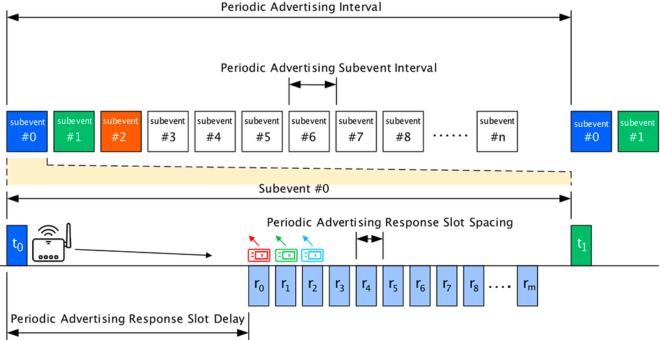


![shutterstock 1653733096[1]](https://www.bluetooth.com/wp-content/uploads/2024/03/shutterstock_16537330961-660x372.jpg)
![Periodic Advertising with Responses[1]](https://www.bluetooth.com/wp-content/uploads/2024/02/Periodic-Advertising-with-Responses1-660x345.png)




